#Preah Pithu (temple)
Text
Restoring Ruins: Korea's Legacy in Cultural Heritage Assistance in Cambodia and Laos
via Korea Herald, 31 August 2023: Scholars in Seoul reflect on Korea's 15-year cultural heritage aid journey, including restoration efforts in Laos and Cambodia, aiming to empower nations to preserve their heritage.
via Korea Herald, 31 August 2023: Experts and officials gathered in Seoul to discuss Korea’s cultural heritage assistance projects, reflecting on a 15-year journey that included restoring Laos’ Hong Nang Sida Ruins and Cambodia’s Preah Pithu, aiming to empower nations in safeguarding their heritage.
The journey of the country’s cultural heritage ODA, which started with a modest budget of 70…

View On WordPress
#Angkor Archaeological Park#Champasak (province)#Hong Nang Sida (site)#Preah Pithu (temple)#restoration / reconstruction#Siem Reap (province)#South Korea (Republic of Korea)
0 notes
Text
Preah Pithu group temples were built during the reign of king Suryavarman II and king Jayavarman VII for both Hinduism and Buddhism.
https://youtu.be/wkw2D31hRvQ
youtube
0 notes
Text
Travel Tuesday Cambodia: Preah Pithu Group
Travel Tuesday Cambodia: Preah Pithu Group
Preah Pithu (Khmer: ប្រាសាទព្រះពិធូរ, Prasat Preăh Pĭthu[praːsaːt prĕəh pi tʰuː]) is a group of five temples at Angkor, Cambodia. In fact they were in all probability not designed as a group. Despite their ruined state, the remains have good decorative carving and their semi-wooded setting is attractive and peaceful
from: https://en.wikipedia.org/wiki/Preah_Pithu

View On WordPress
0 notes
Text
Angkor Archaeological Park

Most commonly known for Angkor Wat, the archaeological park is located just outside of Seim Reap in Cambodia. The sprawling compound built in the 9th century A.D. is home to 1,000+ temples and structures that make up this popular tourist destination.
2 million visitors make the trek to Seim Reap to visit the ruins; The 37 USD entrance fee and with impressive tourism numbers have provided a revenue stream to preserve and restore the temples. Sadly, most temples have some level of destruction due to natural disasters, looting, and nature doing nature-things.
Some of the famous temples and sites in the archaeological park:
Angkor Thom
Angkor Wat
Baksei Chamkrong
Banteay Kdei
Banteay Samré
Banteay Srei
Baphuon
the Bayon
Chau Say Tevoda
East Baray
East Mebon
Kbal Spean
the Khleangs
Krol Ko
Lolei
Neak Pean
Phimeanakas
Phnom Bakheng
Phnom Krom
Prasat Ak Yum
Prasat Kravan
Preah Khan
Preah Ko
Preah Palilay
Preah Pithu
Pre Rup
Spean Thma
Srah Srang
Ta Nei
Ta Prohm
Ta Som
Ta Keo
Terrace of the Elephants
Terrace of the Leper King
Thommanon
West Baray
West Mebon
ANGKOR ARCHAEOLOGICAL PARK UNCENSORED
Visiting Angkor is a multi-day excursion; however, a full day trip allows you to see most of the popular points of interest.
Getting to Angkor Archaeological Park is easy as tour drivers and guides are available in town and at any hotel.
Read the full article
0 notes
Text
Siem Reap Tour Packages – Things Or Places To Add
Siem Reap is best recognized as the entrance to Angkor Wat & the rest of Angkor ruins, a UNESCO World Heritage site. The UNESCO site encompasses not only the shrines but also hydraulic structures, reservoirs and canals that collectively make up close 400 square kilometers in what’s arguably one of the most noteworthy archeological sites in Southeast Asia. If you are not so sure regarding what to add into your Siem Reap tour packages, then please keep reading this article.
Go shrine hopping around Angkor Wat:
There is no right or wrong way to discover Angkor Archaeological Park, but you can be tactful about it. Start with official 'Wonder of the World' & the largest spiritual site on Earth, Angkor Wat but get up early to witness it at sunrise as there will be a lot of tourists with the same idea. Get yourself the 3-day temple pass ($62) if you are here for anything longer than a week break, as it is worth taking time to discover the smaller of-road shrines such as Preah Pithu, in and around the main city of Angkor Thom.
Take an exciting hot air balloon ride:
Probably the most enthralling experience you can discover in Southeast Asia, taking a flight over the famous Angkor complex at sunset or sunrise is just incredible. Compared to the helicopter ride, the hot air balloon ride is slower, more tranquil and quieter. Don’t forget to take your camera as there will be lots of photos to be taken from the air.
Explore the old market:
Also identified as Psah Chas (pronounced “psa cha”), the old market is right in the heart of town & was the original market prior to the countless others cropped up. This market has everything & is a must visit as it will give you a glimpse of the real Cambodia, the country that lies outside of the well visited Siem Reap.
Consider Phnom Penh Tour Packages:
Phnom Penh, Cambodia’s busy capital, sits at the junction of the Mekong & Tonlé Sap rivers. It was a hub for both the Khmer Empire & French colonialists. On its walkable riverfront, lined with parks, eateries and bars, are the ornate Royal Palace, Silver Pagoda & the National Museum, demonstrating artifacts from around the nation.
Don’t forget to consider Battambang Tour Packages:
Battambang is the main hub of the Northwest connecting the entire region with Phnom Penh and Thailand, and as such it’s a vital link for Cambodia. Battambang city is a peaceful and pleasant place these days. It is a nice, picturesque setting. As with much of Cambodia, the French architecture is an attractive bonus of the city.
0 notes
Text
Wonders of Angkor, Cambodia lat13.345259 long103.85418
Backpackers and long term travellers all follow kind of the same route across South East Asia. From Thailand to Cambodia to Vietnam to Laos. With loads of options for cheap flights and over-night busses and visas on arrival hopping from country to country can be done easily.
After a month in Thailand, we hopped on a ‘direct’ bus to Siem Reap to explore Angkor Wat. Be careful when booking your bus ticket as most companies do not offer a direct bus (which basically means you need to carry all your stuff across the border and switch busses). There are busses operated by the Thai government that leave from Mo Chit Bus Terminal that take you all the way to Siem Reap which is very convenient as you only need to take your passport when getting off the bus to cross the border.
The trip takes around 10 hours, 2 of which you will spend at the border getting stamped out of Thailand and getting your Visa in Cambodia. The bus from Bangkok stops at the Poi Pet border crossing. On the Thai side everything is pretty well organised; you get off the bus and walk a few minutes to the border control where you will get stamped out of the country. Beware of locals waiting at the bus asking for your passport and offering to take you to the office - this is a scam!
After leaving Thailand you walk across the border and have to get your Visa in Cambodia. It is supposed to cost 35$ (1200 Baht) but at the immigration office they will ask 40$ (1400 Baht) 9 out of 10 times. If you refuse to pay, they will just hand you back your passport and refuse to issue the visa so you do not have a choice but pay the bribe.
After getting your visa you will have to go to another border control office and after you get another stamp from there you can finally get back to the bus.
Once you’ve made it to Cambodia, it only takes another 4 hours to get to Siem Reap. We stayed at Tipsy Turtles and cannot recommend it enough. The staff is great, the dorms are clean and quite cheap and they’ve got a bar with good happy hour deals.
By the way, although Cambodia has a local currency called Riel (4 000 Riel = 1$), you mostly use dollars. Don’t even bother trying to withdraw Riel anywhere, even the locals use dollars.
It is safe to say, that the only reason one ventures to Siem Reap is to explore the Archaeological Park of Angkor Wat. Siem Reap is about 7 km from the park entrance and offers accommodation for all those who’d like to explore the infamous temples of Angkor Wat. There are different access passes depending on how many days you’d like to spend climbing ancient ruins. As of February 2017 the government has decided to increase prices so the new prices are as follows :
1 Day pass : 20$ (37$ as of Feb 2017)
3 Day pass (to be used in a period of 7 days) : 40$ (62$ as of Feb 2017)
7 Day pass (to be used in a period of 30 days) : 60$ (72$ as of Feb 2017)
Considering the size of the area in which the major temples are located, it is impossible to see everything in one day. 3 days seems to be the most popular option unless you’re really pressed for time or LOVE history beyond anything.
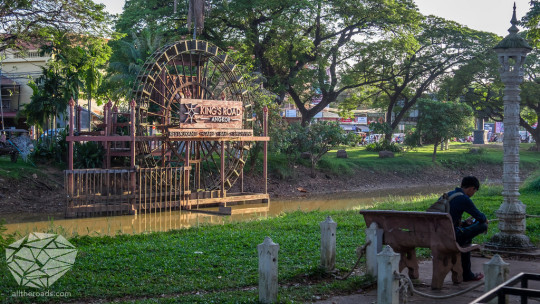
You cannot purchase your pass at the entrance to the park. You need to go to the ticket counter about 4 km east of Siem Reap. Getting in without a ticket is impossible as they check it at all of the major temples.
What makes the ticket prices even sweeter is the fact that they do NOT include transportation. That, you have to pay extra. There are several ways of getting around the Archeological Park; the most popular seems to be by Tuk-tuk. Depending on whether you are going for the grand or the small circuit rates for the day vary between 15 and 25$. When travelling with a group, hiring a tuktuk can be of advantage as you can split the fare but we found that too many drivers are unwilling to go beyond the typical “circuit tour”. There is more to Angkor Wat than just Ta Prohm and Angkor Thom so make sure you hire a tuk-tuk for the day and not only for one of the circuits (the difference being that he’ll take you to where you want to go instead of just doing his tour and stopping at the 4 biggest temples).

For fitness freaks or those with way too much self confidence, there is a possibility to rent bikes for 2-3$ a day. Every single person we saw on bikes seemed to regret it before they even got to the entrance of the park but that was just our impression. The distances between Siem Reap, the park entrance and the different temples should not be underestimated. Just the smaller circuit (without stopping here and there to explore smaller temples off the road) adds up to about 35 km! And then you still need to climb up those ruins to actually enjoy some views and the architecture. Last but not least, cycling 35 km is one thing, doing so in the heat of the always present Cambodian summer is another. We visited Angkor Wat in January, the middle of the “cool” period and had average temperatures of over 30°C a day. This is just a friendly suggestion, everyone’s free to do what they want. We’d be sad to spend 40$ only to NOT enjoy our visit because we cycled ourselves to death, but well…
Our recommended way of getting around Angkor Wat is .. *drum roll* by E-Bike! When randomly walking through Siem Reap we found a few shops that were renting E-Bikes and decided to give it a try. The going rate seems to be 7-10$ a day which is super affordable considering that two people can ride on one bike.
Tip : Do not use Green E-Bikes! They charge 10$ per bike (which can only be used by one person), they are incredibly slow and you need to recharge them a lot!
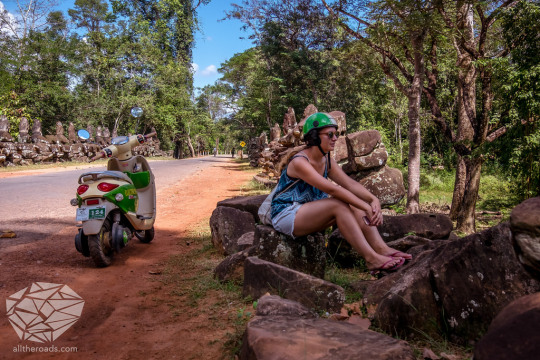
There is a ton of small shops near pub street that rent out E-Bikes (or motorbikes at 10-15$ a day for that matter). We used them for 3 days and didn’t have a problem once. Recharging was only necessary when driving the big circuit and even with two people on the bike we’d constantly drive at 45 km/h. When in Bagan, we fell in love with the concept of renting E-Bikes : you’re free to go wherever you want whenever you want and it’s ecological! Apparently, E-Bikes haven’t been around in Siem Reap for very long which is why we only saw a handful of other tourists using them but more and more rental shops are already popping up. We cannot recommend them enough! It was so nice to just stop wherever and take a turn here and there and explore some of the smaller temples that are generally untouched by the hordes of tuktuks driving around.
Once you’ve sorted out the how and when and where, you are finally ready to explore the immense complex of temples that is called the Angkor Archeological Park of which Angkor Wat is undoubtedly the absolute tourist favourite.
Angkor Wat, in fact, is one of the largest religious monuments in the world and has an amazing story to tell. Built in the 12th century under King Suryavarman II, it was originally a Hindu temple dedicated to the god Vishnu, the protecter and preserver of the universe. Later on, in the 14th century, it was converted to a Buddhist temple. Angkor was also the name of what used to be the capital of the Khmer empire, one of the greatest and most powerful empires of Southeast Asia. Findings suggest that Angkor, at one point in history, was the biggest city in the world and that it could have been home to more than one million people!


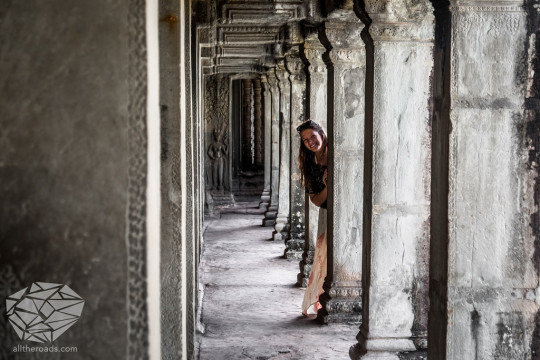
The empire fell in the 15th century but Angkor Wat remained a religious centre and people from all over Asia would make it the destination of their pilgrimage.
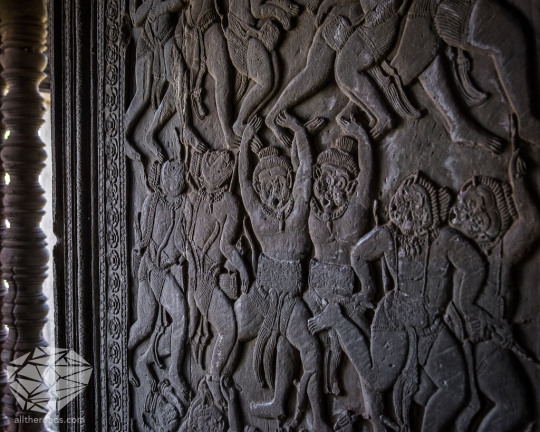
The carvings in Angkor Wat were just mind-blowing!
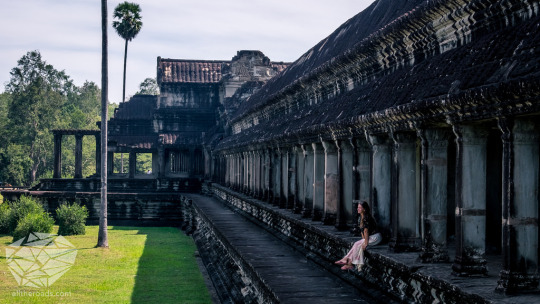

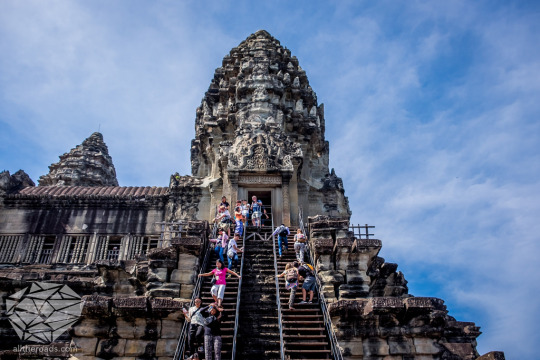
Although Angkor Wat is definitely the most famous of all the monuments in the Archaeological Park, it is by far not the only one worth mentioning (and, in our opinion, not even the most impressive!).
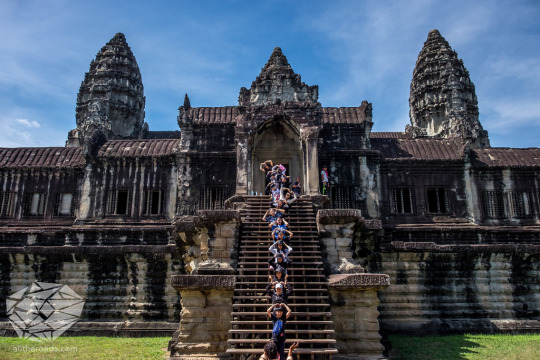

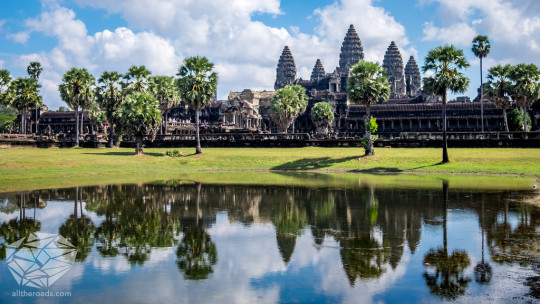
One of the most famous views of Angkor Wat! (highly recommended for sunrise)
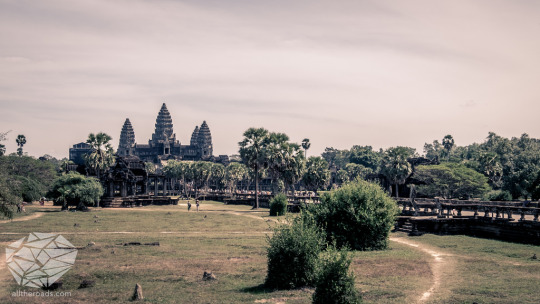
Angkor Thom, presumably the last capital of the Khmer empire, is a fortified city which has been well preserved. From the stunning Bayon Temple in the centre of the city, to Baphuon, the Royal Palace and the Elephant terrace you can freely wander around the ruins by foot. What many tourists seem to miss, in the northeast of Angkor Thom lies Preah Pithu, a small group of smaller but beautiful temples that goes completely unseen by visitors and is slowly conquered by nature.
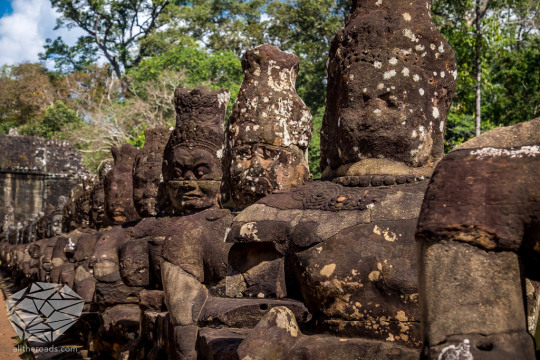
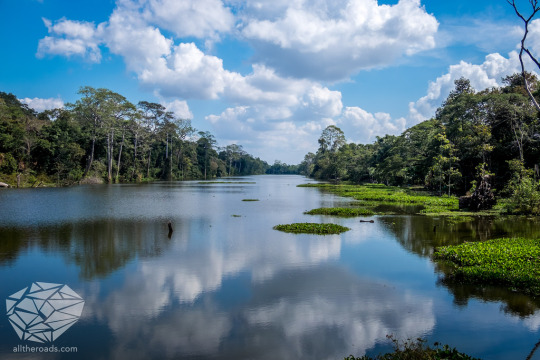
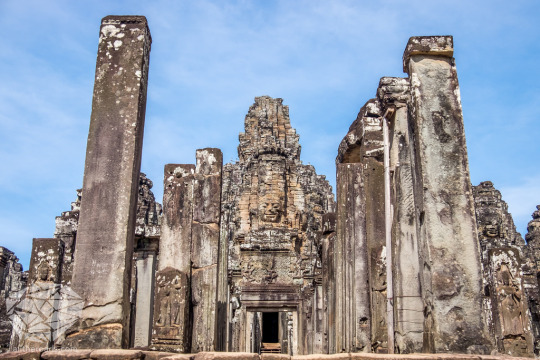
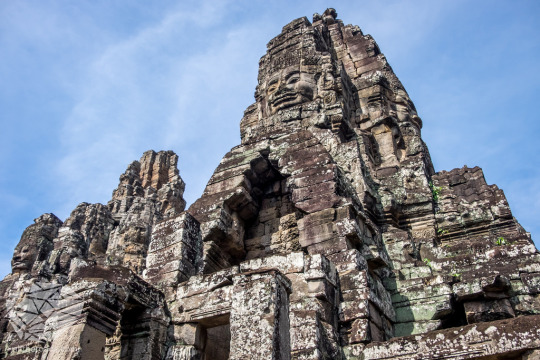
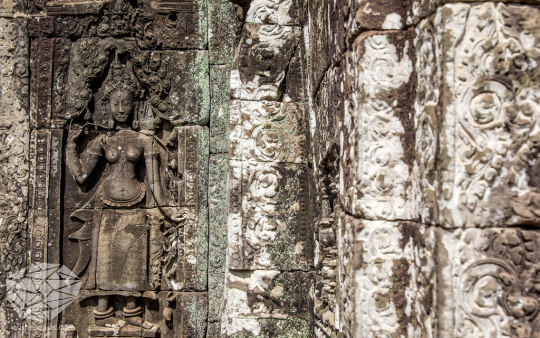



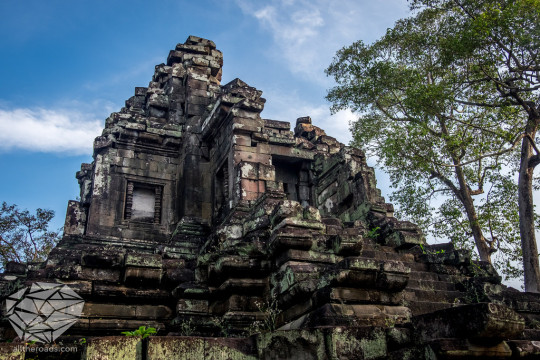
The small circuit will usually lead you past Ta Keo, Ta Prohm (the infamous Lara Croft temple) and Banteay Kdei. There are a few smaller temples along the road that are worth a stop but can be seen in just a couple of minutes.
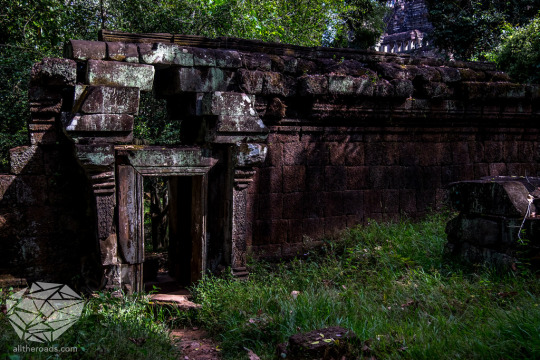
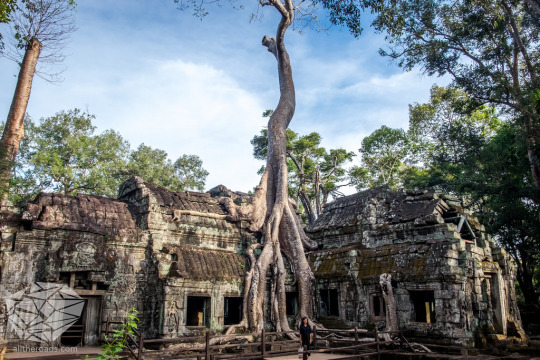


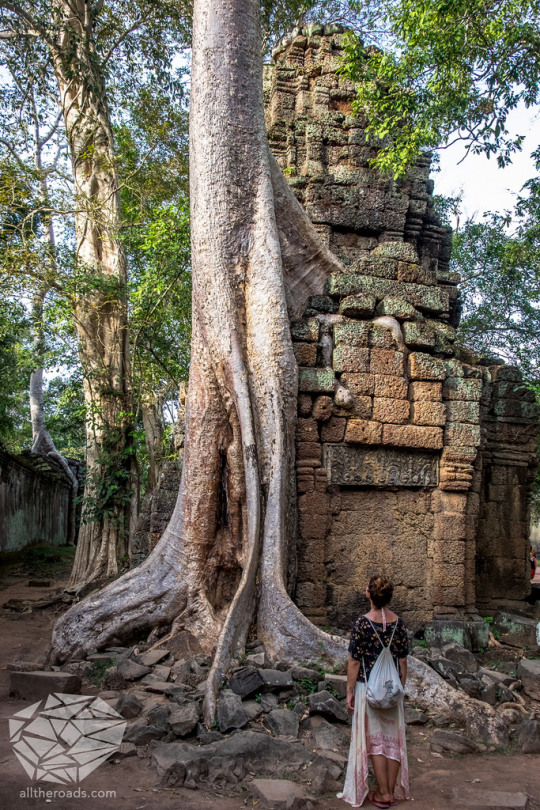
Huge trees are now part of the temple. Nature took back its land!

If you continue driving north from Angkor Thom, you will soon reach Praeh Khan, a monastic complex that, at its peak, was inhabited by over 15 000 monks, teachers and students. Since then, nature has steadily claimed back its ground adding to the mystic atmosphere that seems to be present at all times in the jungle around Angkor.
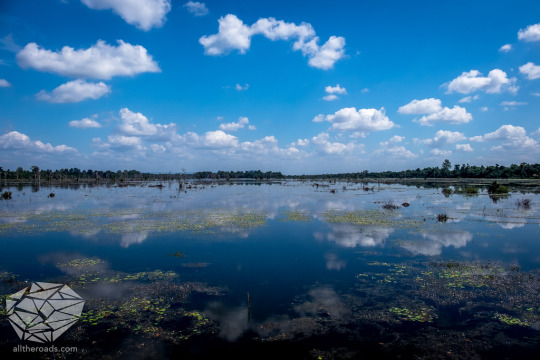
At the east end of the complex you can find this beautiful view.
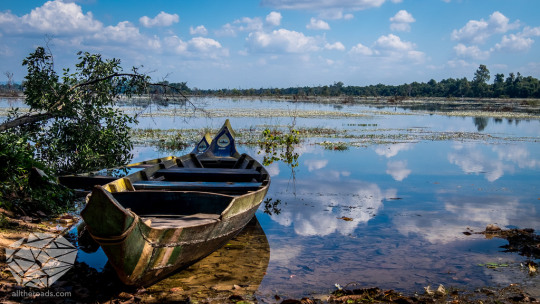
Before reaching Neak Pean, you can make a quick stop at Banteay Prei and Prasat Prei, two tiny temples that aren’t important enough to be on most people’s radars.
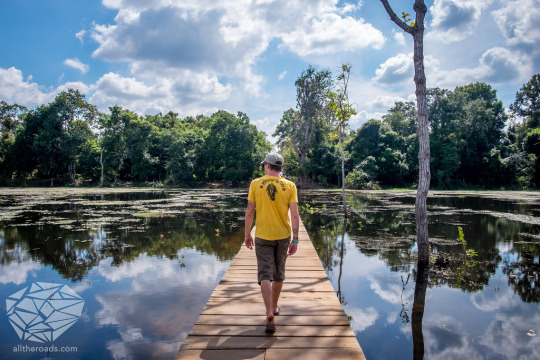
Ta Som, East Mebon and Pre Rup are the last stops on the grand circuit tour. Pre Rup was definitely one of our favourites and we spend about an hour on top of the temple eating cookies, gazing at the clouds and admiring the stone carvings.
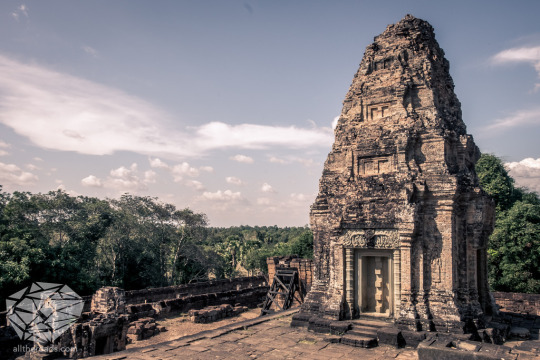
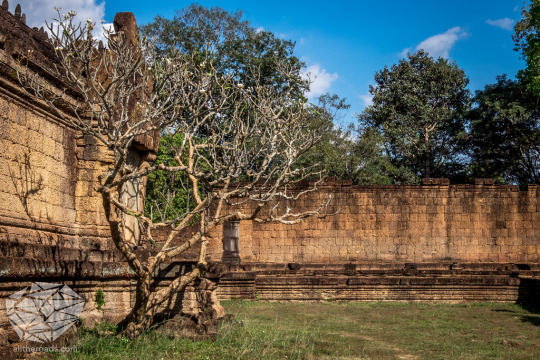
Banteay Samre is located about 3 km to the east of the main complex. Not only can you see some more of the beautiful architecture that is so typical for monuments built during the rule of the Khmer, but you will also enjoy a short ride through some local villages and fields.
We did not see everything there is to see in Angkor but we sure did see quite a lot. Obviously, we could have squeezed in a temple more or two but we wanted to enjoy every last bit and not fall victim to temple fatigue (something that happens quite easily when you’ve spent a couple of months bouncing around Asia).
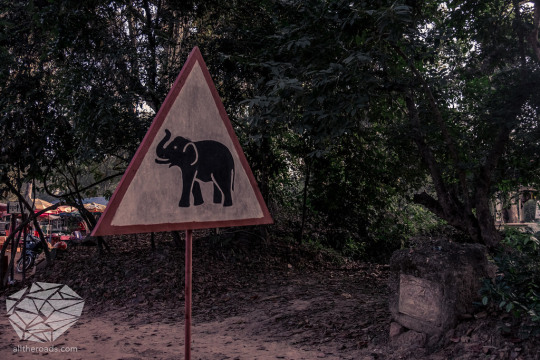
The sunrise at Angkor Wat is something highly debated amongst travellers. In order to get a good spot you need to be there before 5 am (although the left basin was already crowded, the right basin was quite empty until about 5:30 am). The problem is, not every sunrise is worth the effort. In Bagan, every sunrise was unbelievably beautiful but in Angkor that was not the case. We’ve seen beautiful photos online so we gave it a try and were quite disappointed. You are sharing the spot with 1000 - 1500 people (this is an official figure, no kidding) but at least you’re up early and if you leave before the sun is all the way up, you can get some pretty nice shots at the other temples before the rest of the masses arrive.

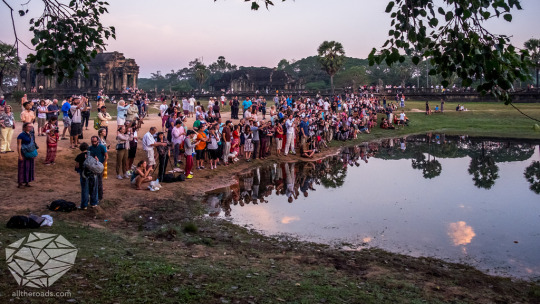
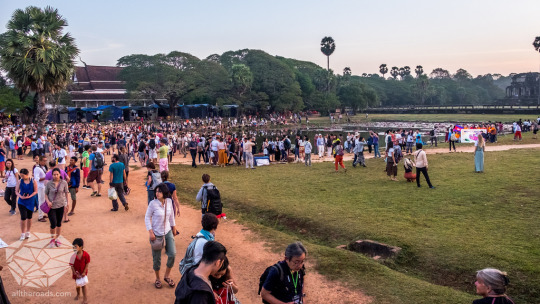

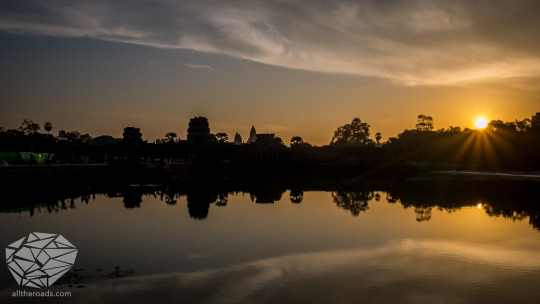
Siem Reap itself has a few museums and markets but there is no point in visiting if you don’t want to see Angkor Wat. Pub Street is as amazing as it sounds though the many happy hour deals can quickly turn from your best friend into your worst nightmare (climbing those freaking ruins with a hangover is NOT fun). Street food can be found for as little as 1$ and there are tiny cocktail bars and fried ice cream stands everywhere.
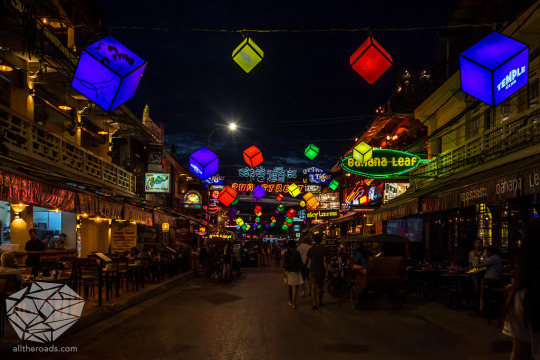
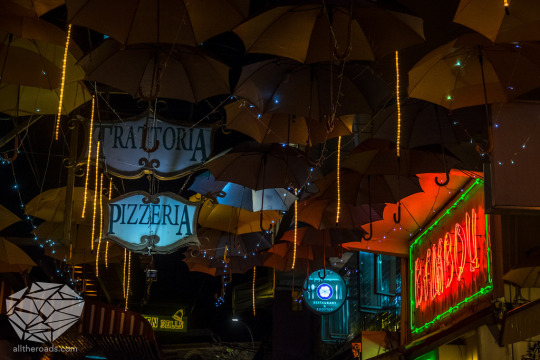
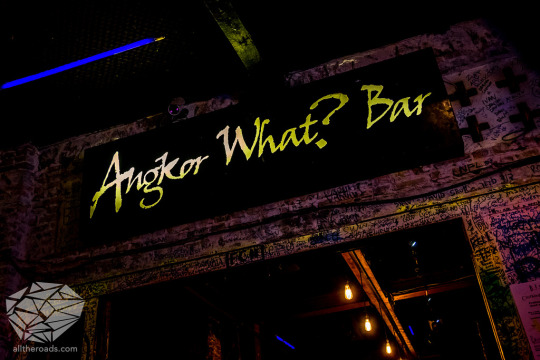
The Angkor What? Bar : probably the most famous bar in Siem Reap!
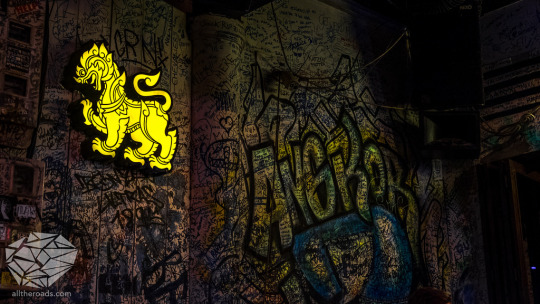
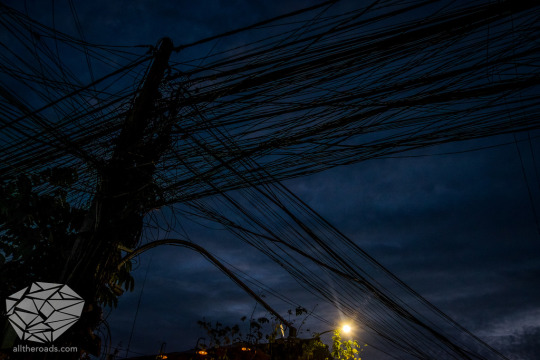
Cambodia was off to a great start!
0 notes
Text
Technical support to preserve Cambodia’s Angkor from South Korea
via Khmer Times, 20 May 2023: Huge error in the article by saying that the Terrace of Elephants is in Angkor Wat, when it is in fact in Angkor Thom.
via Khmer Times, 20 May 2023: The Korea Institute of Civil Engineering and Building Technology is assisting in the preservation and restoration of Cambodia’s Angkor ruins, including the Preah Pithu temple and the Terrace of the Elephants. Huge error in the article by saying that the Terrace of Elephants is in Angkor Wat, when it is in fact in Angkor Thom.
The Korea Institute of Civil Engineering…
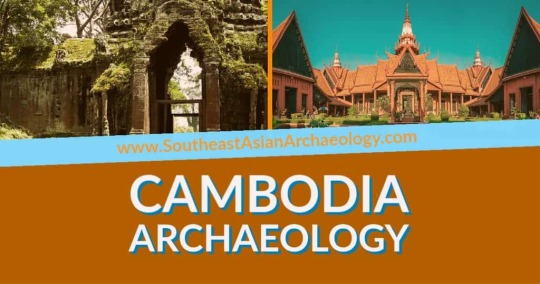
View On WordPress
#Angkor Thom (temple)#Preah Pithu (temple)#South Korea (Republic of Korea)#Terrace of Elephants (site)
0 notes
Text
KOICA Enhances ANA’s Conservation Efforts with High-Tech Gear
KOICA donates equipment and a lab to ANA for Angkor temple conservation, boosting Cambodia-South Korea cultural heritage ties. #southeastasianarchaeology #Cambodia #Angkor #KOICA #culturalheritage
via various sources, 03 July 2024: KOICA has donated high-tech equipment and a laboratory to the APSARA National Authority for the conservation of Preah Pithu temple in Angkor. This decade-long collaboration enhances the preservation and research capabilities of the ANA, strengthening cultural heritage ties between Cambodia and South Korea.
The Government of South Korea, through the Korea…

View On WordPress
0 notes